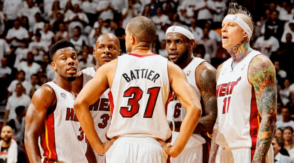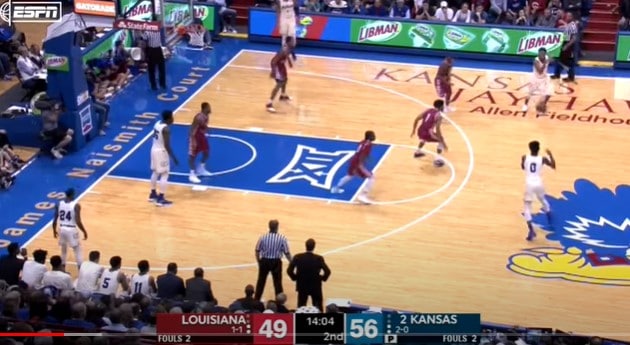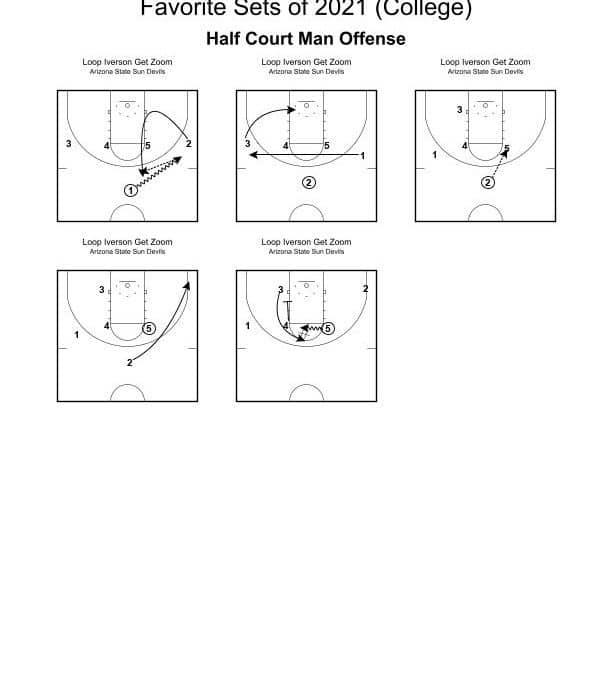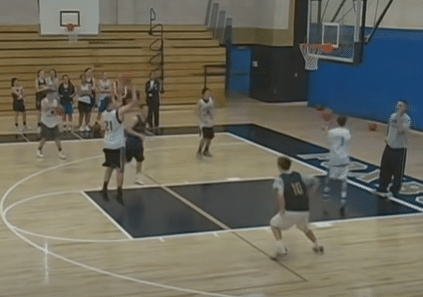The General Manager of the Houston Rockets Daryl Morey once said, “This year we have been a championship team with him, and a bubble team without him.” Strong sentiment for any player – more than understandable for players like James Harden or Dwight Howard. But Mr. Morey wasn’t talking about either of them. He was talking about the Rockets player who averaged 8 points, 4 rebounds, and 2 assists per game. I know what you’re thinking… those aren’t flashy stats by any stretch of the imagination. So how does a player who has skimpy stats warrant such a glamorous endorsement from one of the smartest General Managers in NBA history? It’s because Mr. Morey and the other NBA front offices know what many of us fail to truly grasp – that personal stats are irrelevant when the most important achievement is the team goal of that end of season trophy.
The player I’m talking about is Shane Battier – the 6-8 forward out of Duke University, the #6 pick in the 2001 NBA Draft, and a Naismith Award recipient. Because that introduction was so terrific, I want to reiterate: Shane averaged 8 points, 4 rebounds, and 2 assists per game in his career. So where exactly was his value? What exactly made Daryl Morey go after him in free agency in 2006 followed by Pat Riley’s pursuit for a mega team in 2011? It’s quite simple. Shane makes his teammates perform better.

Shane has been voted NBA’s top teammate. Kevin C. Cox/Getty Images
Moneyball’s author Michael Lewis wrote an incredible article about Battier and his uncommon, yet invaluable tendencies. To summarize the best excerpt of Lewis’s article: Shane may not score the majority of the points or rebound the most, but his teammates score better when he’s on the floor and they rebound better as well. The shots he does attempt are only efficient ones, and he consistently swings the ball to teammates who reciprocate those efficient opportunities. He turned the ball over a minimal amount, and his tenacious defense translated to his teammates’ improved performances. Morey calls him the “Lego”: “When he’s on the court, all the pieces start to fit together. And everything that leads to winning that you can get to through intellect instead of innate ability, Shane excels in.”
Speaking of intellect, let’s gain some insight from lineup analysis about Battier’s 2013-2014 season. From Basketball Reference we know that Battier, when paired with the combination of Bosh, Wade, and James, had a plus-minus point differential of +6. That is a fantastic plus-minus! But it’s not much of a surprise considering the talented surroundings. Let’s change it to a more awe-inspiring case. The 4-man lineup featuring Battier, Allen, Chalmers, and Bosh certainly features less superstar talent. But it also conjured a plus-minus point differential that more than doubled the previous number (+13.6). The 3-man combinations featuring Battier as well as Allen & Bosh, Bosh & Chalmers, Chalmers & Allen all had plus-minus point differentials of at least +9. Overall, Battier himself had a plus-minus of +7.7 during the 2013-2014 season. This incredible achievement is shared in the company of all-time greats like Carmelo Anthony, Tracy McGrady, and Vince Carter.
The message I’m trying to get across here: remarkable personal statistics are not a required formula to achieve an astonishing plus-minus and in turn team success… The evidence is there. Battier was valuable because of his team’s success when he’s on the floor.
It’s this type of lineup analysis that easily pinpoints the impact, positive or negative, that a player has on his team. This analysis is not a guarantee that the suggested outcome happens every single play, however. Outcomes can’t be controlled because there is always randomness involved. But outcomes can be tilted in your favor with odds. As in “Odds are your team will outscore your opponents when Battier is on the floor, or when Battier is paired with certain players.” Let’s make it personal. Wouldn’t it be great to know that for your personal team, your defensive rating increases by 40% when your backup point guard is on the floor? Or that your team’s 3-point FG % increases when your sharpshooter is on the bench?
Many people reading this article would hesitate to buy into these statistics to make decisions on the court. Many think film is ‘easier to learn from’ and would hesitate to implement the knowledge gained from this “Moneyball for Basketball” science. But I can tell you that nearly all NBA teams are using this approach in creating their teams and enforcing changes on the court. Front offices, coaches, and even fans are diving into the analytics realm to make more informed decisions. After all, “odds” are a valuable piece of information to have.
The underlying purpose of this article is to tell you that Lean Basketball Analytics has created a “Moneyball for Basketball” tool called ClinchTM that synthesizes and easily displays this useful “Moneyball for Basketball“ information… for coaches of all levels to use and benefit from. The tool was tested last season. It’s been further developed. And it’s ready for the world to use. Go ahead and check it out >>>





0 Comments